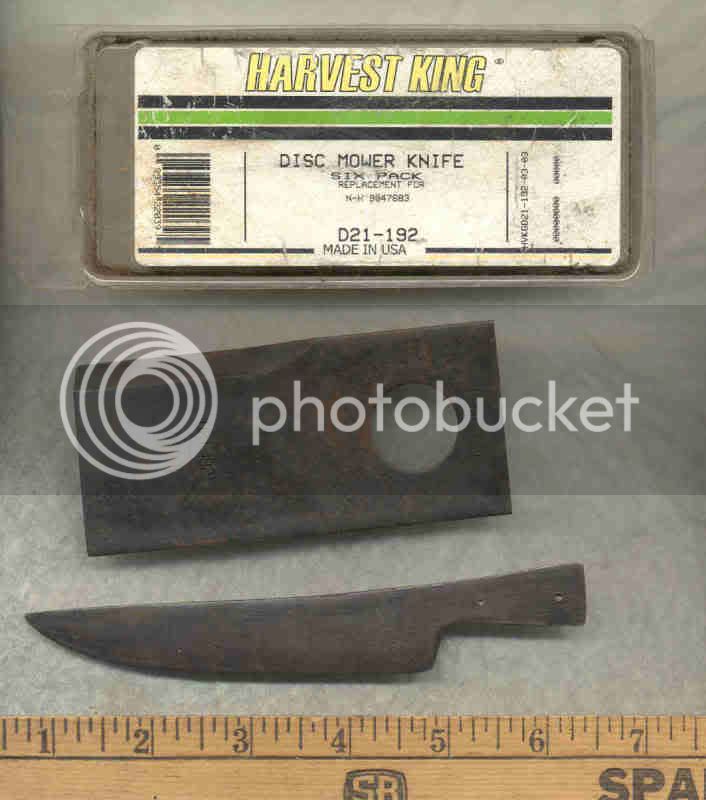I understand what you are saying. In your case you have but two choices. Send the blade out for HT, or just do your best at it yourself, with what you have. Chances are you will get a usuable blade with a simple HT, but it will not be at it's best, either in strength, grain structure, or edge holding. However, if you have not experienced using a blade of 01 properly HTed, you may even be impressed with your results. 01, in my experience, seems to hold a very good edge even with a simple HT, when compared to common store bought knives. I did not always have the proper equipment myself. The problem of simple HTing 01, 5160, or other steels containing chrome, vanadium, tungsten, ect. is that these alloys do not mix into an homogenous condition quickly. These steels require soaking at a controlled temp quench heat for much longer than one can do in a simple forge, and some form of decarb control also helps. 01, for example needs a soak at between 1475°, and 1500°, for 15, to 20 minutes. 5160 needs the same soak, but 10, or 15 minutes will do for it. With 01 you are also dealing with a hypereutectoid steel, meaning that it has more carbon than will go into an homogenous solution. Iron will only absorb into solution .85% carbon. The extra carbides in a hypereutectoid steel will be in clusters if not given enough time, and temp to separate, and disperse. This extra carbon needs to be evenly distibuted in order to not have soft, and hard areas in the steel. That goes also for 1095 steel. These extra carbides are what gives the steel more wear resistance, so that is another reason for them to be evenly distributed.
My first recommendation is that, if you plan to use a magnet to know when to quench, throw it far away. It will not be of use for judgeing quench heat. If you shaped using stock removal, follow this. If you forged, you will need to normalize the blade first. To normalize 01, first bring to a bright red-orange in dim light. Let cool. Then bring to a dull red. let cool. Then bring to just non-magnetic, no more than that. let cool. Yeah, I know. I said throw the magnet away. Go find it and use for this, then hide it. What you have done here is to minimize the grain size to about as small as it will go. Better strength. Now bring the blade back up to a good even red-orange, and try to hold it there as best you can, for at least a few minutes. Do not be too concerned with grain growth. The alloys in 01 greatly retard this problem. Be careful with the heat near the point. Do not allow any part of the blade to go to yellow heat! Quench in ATF, or slightly thinned motor oil, heated to 125° moving the blade fore, and aft, never sideways, as soon as it goes under. There will be a fire. Do not panic, it will go out as soon as the steels cools in the quench, but be prepared for it. Do this for maybe a minute, then remove. If you have warp, you have about 3, to five minutes to straighten with gloved hands, but beware beyond five minutes. Check hardness with a good file. If it does not skip, file it deeper to double check. With no decarb protection, you may experience decarb in the surface, but it should be hard just a few thousandths underneath. ASAP, place in a preheated oven at 450°, checked with an oven thermometer. Cook for two hours, let cool, then repeat one more time. If all went well, you should have a decent blade of around 58Rc, even though not to it's maximum potential. If you have more warp than you care to live with after all this, contact me. As to how to insert the blade into the quench. Many go in edge down. I go in point down. Either way works, but I've had less warping going point first. Either way, get it under quickly, but as close to 90 degrees to the oil as you can aim it. Good luck. I think you will be satisfied with the results. Jeez, I think my post on this is as long as one from Paul V! Just kidding Paul.

